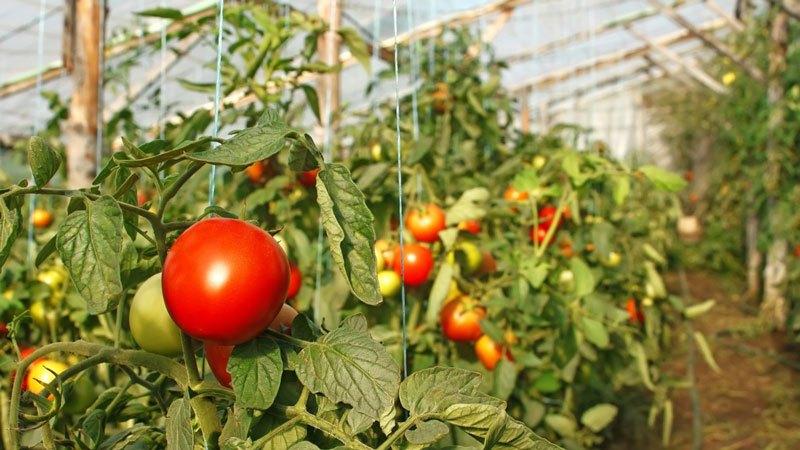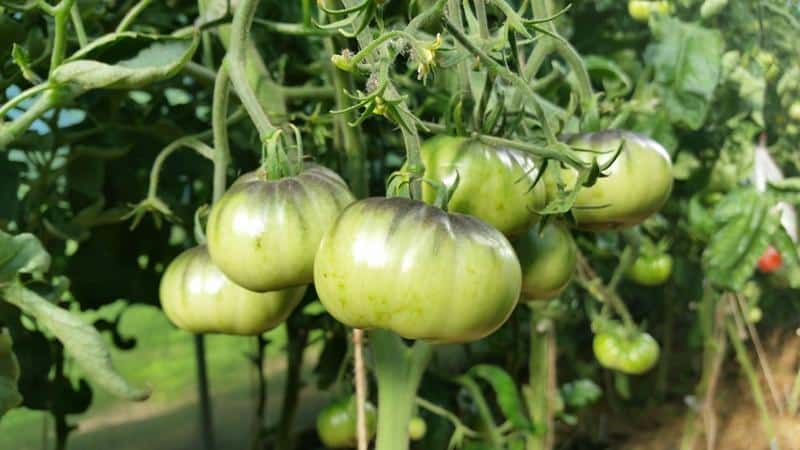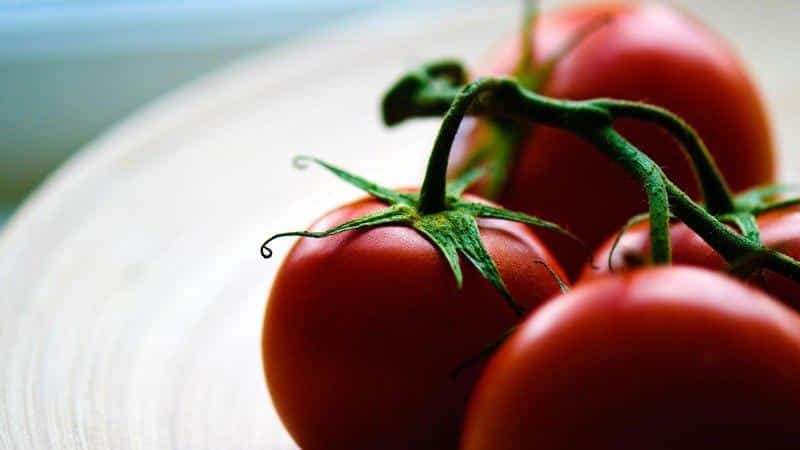How to properly mulch tomatoes in a greenhouse with grass clippings and other materials
Doing a lot of work in the process of growing tomatoes, every summer resident wants to get the best harvest possible. At some point, the question arises: is it possible to somehow make labor easier and increase the return on land? Yes, there are such methods, and one of them is an effective agricultural technique called “mulching.” This is what we will talk about in this article.
What is mulching
Mulching is the laying of any material of organic or inorganic origin on the surface of the bed. It plays an important role in creating a soil microclimate, preventing it from drying out, and at the same time allowing oxygen to penetrate inside.
Thanks to mulching, the top layer of soil does not overheat in the summer. In winter it saves the earth from freezing, in spring and autumn it resists rain and floods. In addition, such material helps fight weeds.
Why mulch tomatoes?
Tomatoes can grow without mulching. The difference will be in the quality and quantity of the harvest. It benefits vegetables and makes caring for them easier.
The benefits of mulch and its varieties
Mulching prevents the rapid evaporation of moisture and the formation of a crust on the top layer of soil, which prevents air circulation. Under its layer, weeds do not grow as actively, since it does not allow sunlight to pass through.
The organic coating is gradually processed into fertilizer itself, which has a positive effect on the fertility of the land. In addition, it creates good conditions for the life of earthworms.
Organic types of mulch include:
- fallen leaves;
- hay, straw and freshly cut grass;
- sawdust, wood chips and chopped bark;
- pine paws;
- compost, etc.
Inorganic species include:
- film;
- stone, gravel, crushed stone;
- newspaper and cardboard;
- garden covering material of non-woven type.

How to mulch tomatoes in a greenhouse
A greenhouse creates an enclosed space with elevated temperatures. It is characterized by increased evaporation of moisture - mulching allows you to slow down this process. Therefore, it is relevant in greenhouses.
The most suitable materials for shelter are hay, straw, and mown grass.
First, tomato seedlings are planted, then watered, then the earth is loosened, then the prepared material is laid.
Mulching tomatoes in open ground
Without the use of a greenhouse, the earth is more exposed to wind, sun, and water. The formation of a hard crust on the surface has a bad effect on plant growth. Regular loosening is necessary to ensure air access to the roots. Therefore mulching in open ground even more is needed than in closed beds.
You can use film and other materials more boldly. It is advisable to use black film with the addition of straw or sawdust to prevent overheating of the earth.
The intensity of sunlight in open ground is greater, so covering material must be laid in a layer of at least 5 cm to reduce the growth of weeds.
Choosing material for mulching in a greenhouse
Before you start mulching, you should decide on the material. In addition, you should familiarize yourself with its positive and negative properties.
Freshly cut grass
Mulching tomatoes in a greenhouse with mowed grass should not be done immediately, as it cakes and forms a crust that does not allow air to pass through and rots easily. First it should be slightly dried.
Place it in a layer of 5-7 cm on pre-weeded and watered beds, leaving the root zone and plant stems free.
Gradually, under the influence of microorganisms and the activity of earthworms, the layer of cover will decrease, so it will be necessary to add grass on top.
Hay and straw
The covering material is laid out immediately after planting the seedlings: straw in a layer of 10-15 cm, hay in a thinner layer of 5-10 cm. As it subsides, it is added.
There are differences between hay and straw as mulching methods.
Hay:
- It’s easy to prepare - just mow it on your own plot;
- quickly decomposes, fertilizing the soil; must be reported during the season;
- holds heat and moisture well;
- allows the earth to breathe;
- contains weed seeds, which leads to their proliferation;
- attracts slugs and other insects.
Straw:
- due to the dense structure in the greenhouse it begins to hum;
- does not fertilize the soil;
- does not contain seeds;
- does not cake, one layer is enough for the whole season;
- activates the development of soil microbes, which leads to a decrease in nitrogen in the soil.
Newspapers and cardboard
It is better to avoid newspapers, as they contain paint. The cardboard must be unpainted. You can use it whole - cutting a hole for each plant, or you can chop it.
When used entirely, after installation, it is advisable to place heavy objects on top or sprinkle with earth so that the wind does not blow it away.
When there is high humidity, cardboard becomes moldy, gets wet and attracts slugs.
Compost
Good material for mulching. It is not recommended to use it in its pure form; it should be mixed with other organic materials (sawdust, grass). The disadvantage is that it contains too many nutrients, which causes strong green growth and reduces the amount of ovary.

Leaves and needles
Mulching with leaves is the simplest and most effective method. They help retain heat and water. When they rot, they turn into a fertilizer rich in potassium, phosphorus, calcium, and nitrogen.
The coating of pine needles retains moisture well and protects from weeds. There is no need to frequently update the layer with new needles, since, being on the surface, they rot slowly.
Wood sawdust
By allowing air to pass through, they allow plants to breathe and inhibit the growth of weeds. Over time, they themselves turn into earthen mass.
Mulching with sawdust is useful for potatoes, raspberries and tomatoes.
Important. In the process of rotting sawdust, bark and shavings, nitrogen is additionally drawn from the ground. To prevent plants from experiencing its deficiency, fertilizing with nitrogen fertilizers is necessary.

Inorganic materials
When using a film, you should choose an opaque one - it will inhibit the growth of weeds. The film is suitable for the cold season; in the hot summer it will have to be removed so that the seedlings do not dry out.
Non-woven covering fabric has proven itself well. It has a long service life - up to five years, it protects well from rot and pests, and allows moisture and air to pass through.
Stone, gravel, crushed stone have more of a decorative function. Weeds grow through them. To weed, it will be necessary to remove the entire layer and then lay it down again.
How not to mulch tomatoes in a greenhouse
You should not use roofing felt in this case. It does not allow moisture to pass through to either side. Slugs gather under it, it gets very hot in the sun, which will harm the roots of plants. It is worth noting that when heated, it releases harmful substances, including carcinogens.
Coniferous sawdust, branches, and wood chips should be used carefully in the greenhouse, as they oxidize the soil. For the same reason, you should not pour pure peat - mix it with compost.
Terms and rules
Determining the timing for mulching in a greenhouse depends on its type: heated or not. In a heated one, it can be done at any time when the seedlings are planted. In an unheated room - when the threat of frost has passed.
If organic material is used, it is laid after planting. Free space is left around the seedling. When laying inorganic material, cross-shaped slits are made in it, into which seedlings are planted.

Tips and tricks
Based on reviews from experienced gardeners, we offer you some tips that will help in the mulching process:
- All types of covering material are laid out on the prepared priming - weeded and watered.
- When harvesting grass, it is best to mow it before the seeds form.
- Leaves of oak, walnut and poplar should not be used as covering material. They contain growth inhibitors that inhibit plant development.
- When weeds grow through the covering material, it is not necessary to pull them out.You can simply cut, mow and lay on top.
- When using sawdust, add chalk or slaked lime to prevent soil oxidation.
Conclusion
Mulching tomatoes is an effective way to increase productivity and make your work in a greenhouse easier. There are many materials of different origins that are suitable for mulching tomato beds. However, regular hay and straw remain the best options.